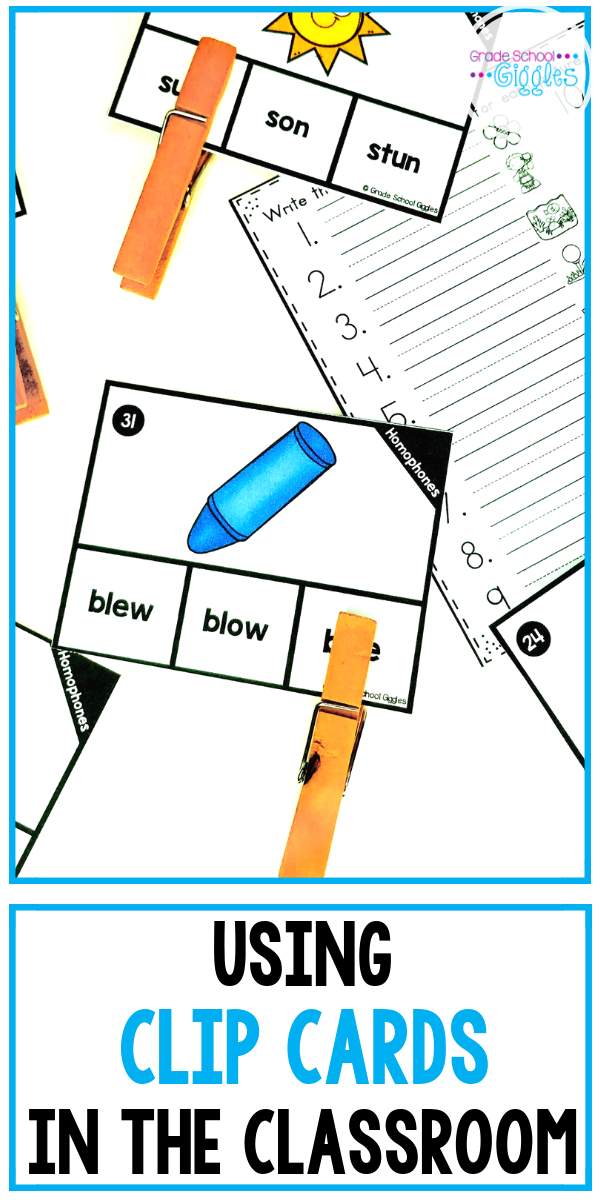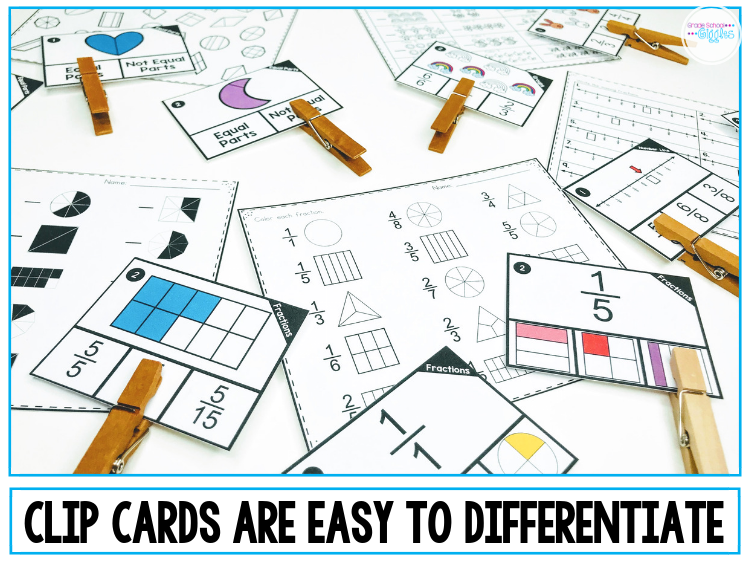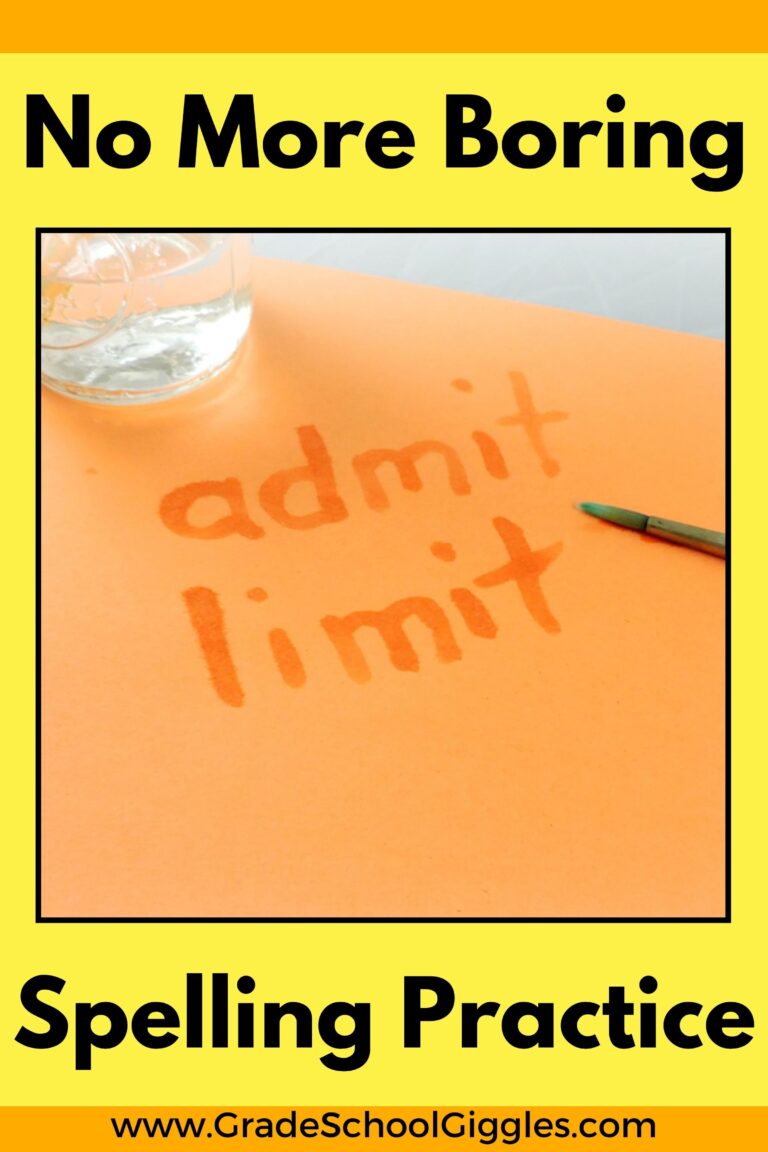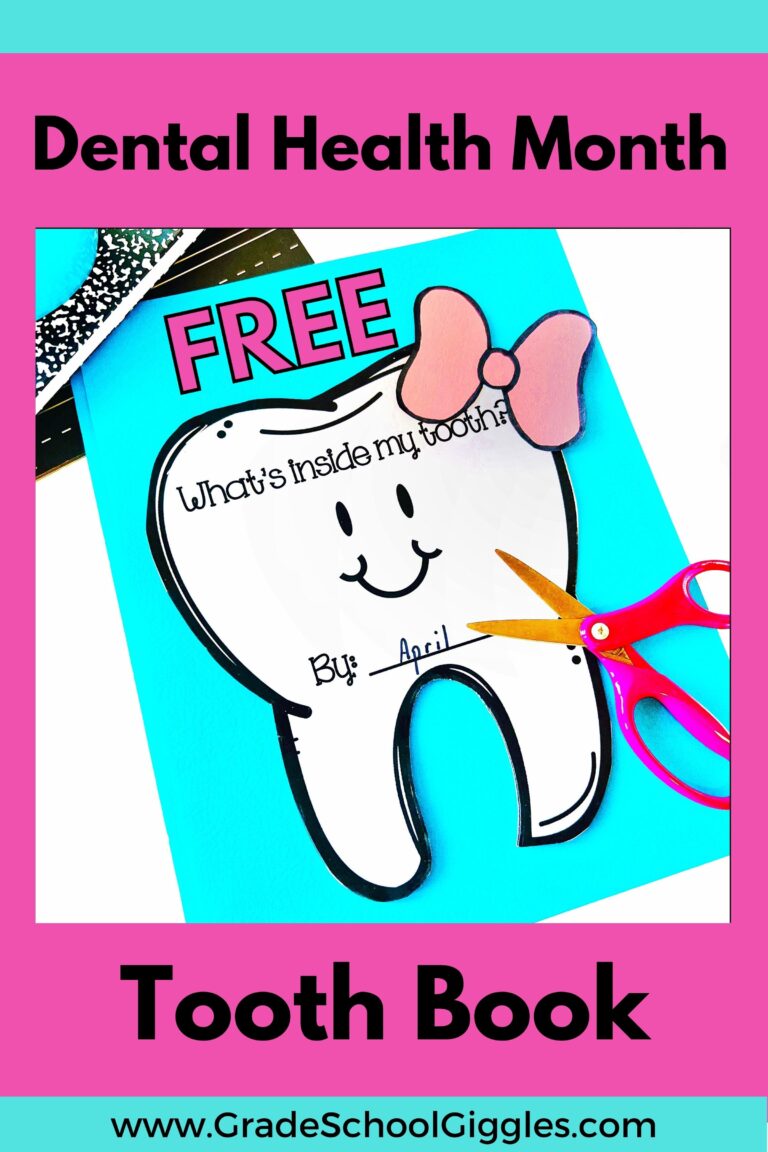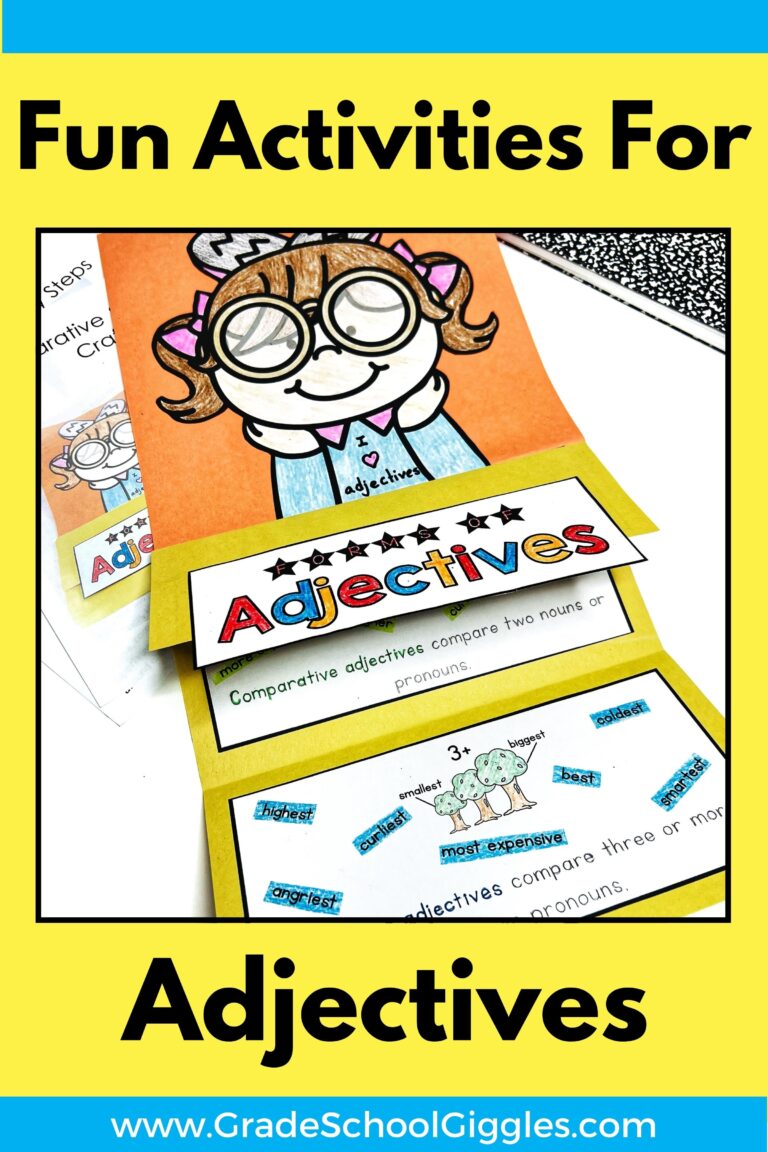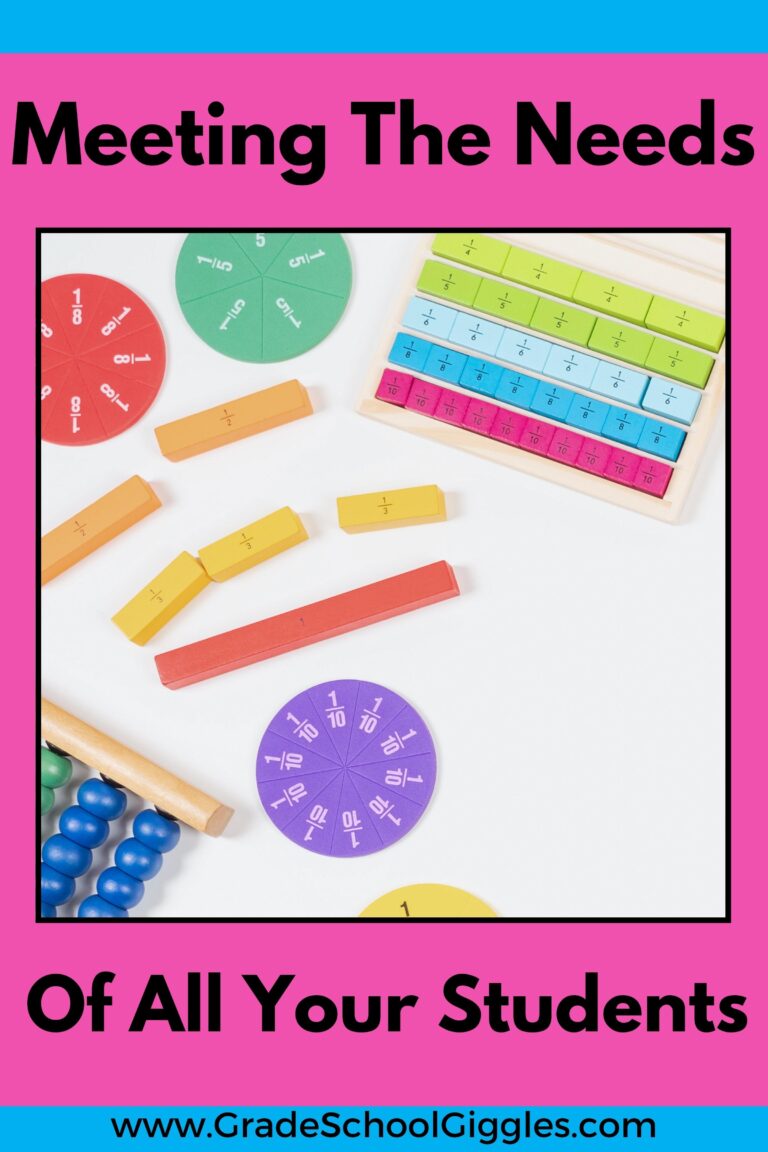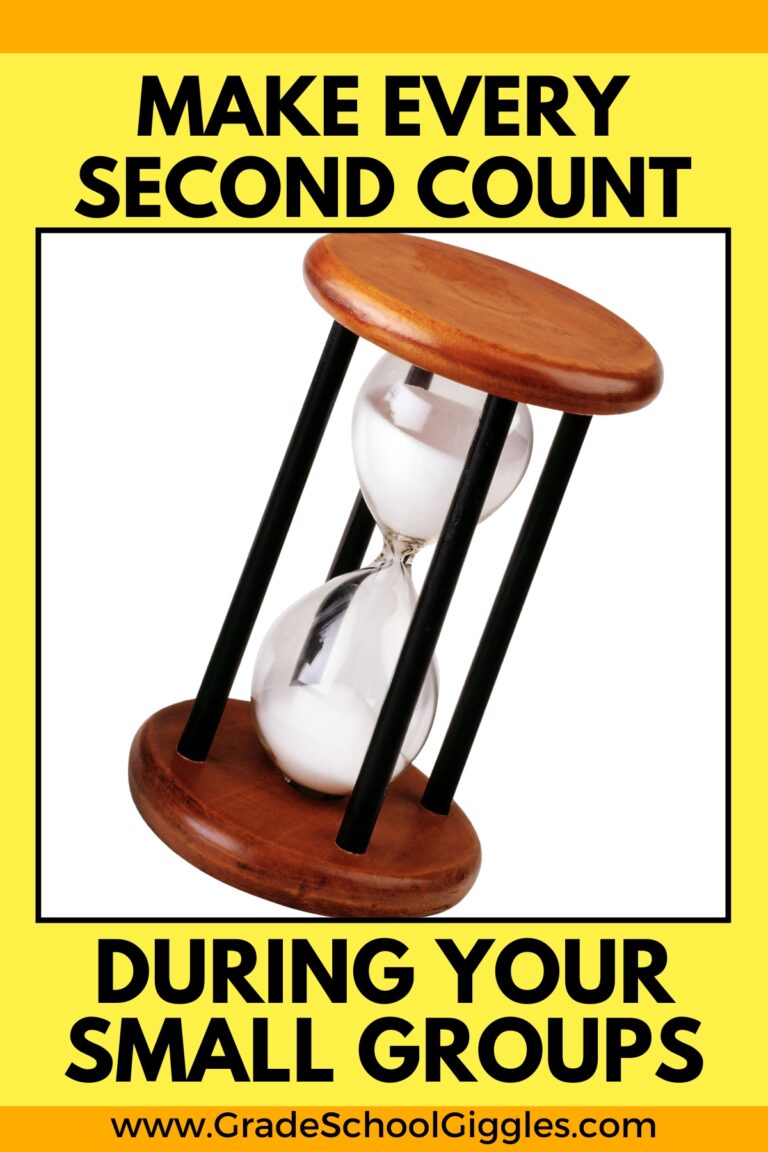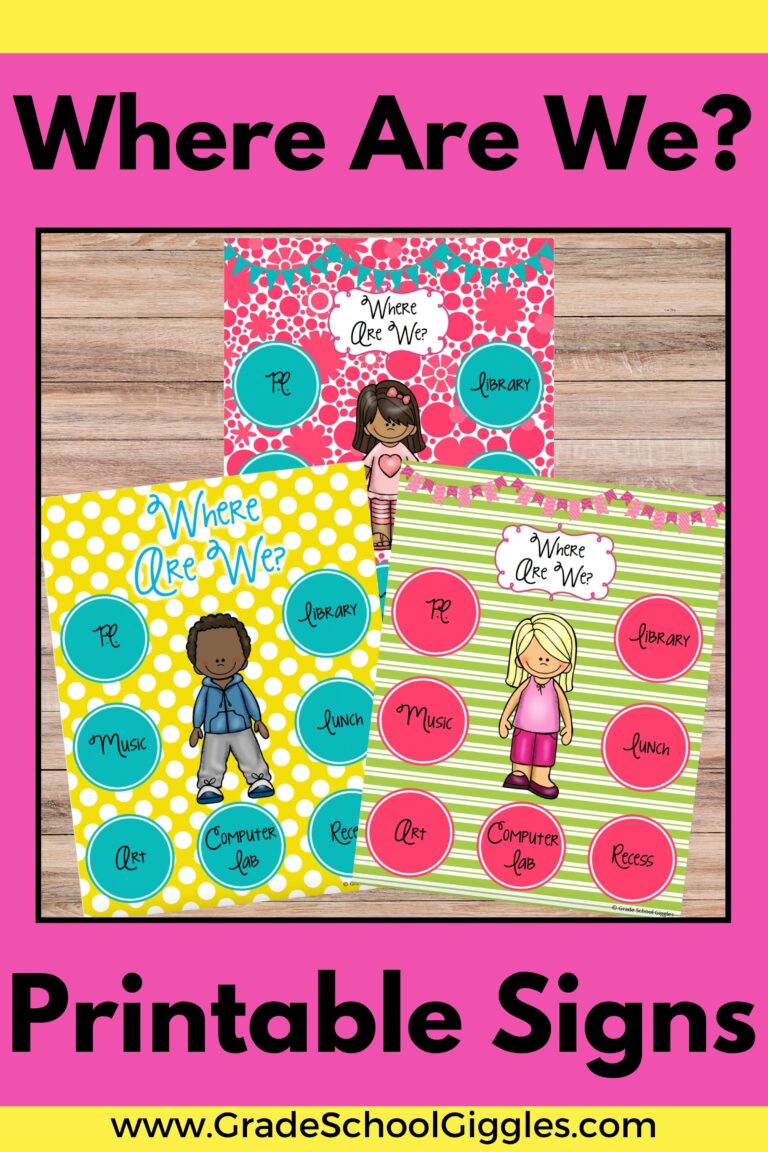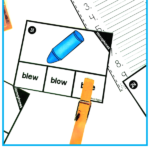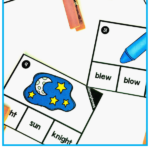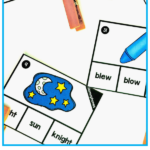Want to Give Your Students More Feedback? Clip Cards Might Be The Tool You’re Looking For
If you’ve been in the classroom for a while, you’ve probably heard of task cards, but have you heard of clip cards?
They’re a type of task card. Like task cards, they’re an awesome tool for the classroom. They save paper, target specific learning objectives, and can be used in multiple ways. Clip cards are versatile and easy to differentiate. While they aren’t open-ended like some types of task cards, they can be self-checking, which makes them awesome for independent learning.
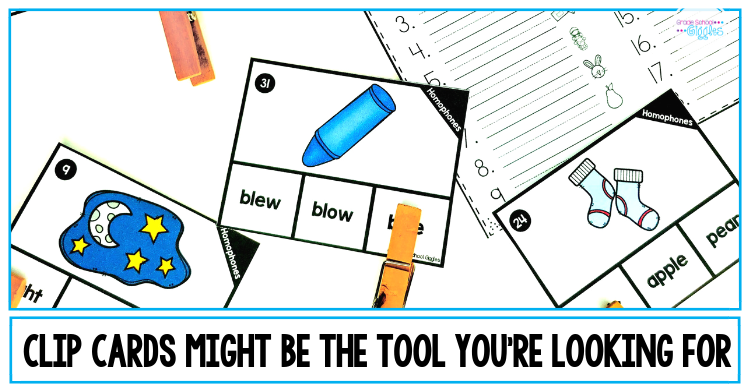
So, if you’re curious about how to use this tool in your classroom, keep reading.
Setting up clip cards is easy.
One of the great things I love about clip cards is that they’re easy to set up. You’ll need a couple of things to get started.
- Set of clip cards
- A binder ring (optional)
- A small plastic bag
- Clothespins
- Recording sheet / Worksheet (optional)
First, print the cards and cut them apart. Straight lines mean it won’t take long. If you’d like them to be self-checking, simply flip each card over and add a checkmark, smiley face, or sticker on the back of the card just behind the correct answer choice.
Next, figure out how you want to organize them. I like to punch a hole in the top left corner and put them in order on a binder ring. It makes it easy to keep them together, but I can still easily separate them for activities as needed.
Once you’ve prepped the clip cards, you can use them year after year. (You might want to laminate them if you’ll use them a lot.)
If you’re going to use recording sheets, copy them, and put the clip cards, worksheets, and clothespins together in a tub or bag to keep it all organized. You can also choose to skip the recording sheets altogether or use them separately as assessments.
Get started with a free set.
Get your free set of homophones task cards below.
Clip cards are easy to differentiate.
Another awesome thing about clip cards is they’re easy to differentiate.
Here are a few ways to differentiate with clip cards.
- Give students different sets to work on during centers or morning work time
- Give students who work slower fewer clip cards at a time
- Use them to provide enrichment for early finishers
- Send a set home with kids needing extra practice on a specific skill
My clip card sets come with sets of cards at differing levels. They also come with a worksheet and key for each set. If the clip cards you’re using have worksheets, you can also give the worksheet as a pretest and then differentiate based on the results. Kids needing practice with the skill can work through the clip cards using the self-checking feature to get instant feedback. Students who’ve mastered the skill can be given the more challenging set of cards.
You can use clip cards in lots of different ways.
Clip cards are great for engagement because you can use them in so many ways. Of course, you can have students work through them independently, but there are other fun ways to use them.
- Pair students up. Have them agree on the answer, clip it, and check it. Encourage them to talk about their thinking.
- Give each student a whiteboard. Project the cards with a document camera. Students write their answers and hold them up before revealing the correct answer.
- Pair clip cards with board games. Each child answers a card and checks it before taking a turn. If it’s correct, they take a turn. If it’s incorrect, they skip a turn. You can give partners different sets of cards if they need to work on different skills.
- Place cards around the room. Give students a clipboard and recording sheet. Have them move around the room to find and answer the cards.
- Give each student a card with the answer marked on the back. Play music and have each student find a partner. Partners take turns quizzing and correcting each other. Then, they switch cards. Play the music again and have each student find a new partner.
- Give a parent volunteer a pack of cards to use with a kid, like flashcards. The answers are right there for the parents so they can provide immediate feedback.
- Play Scoot. Put a card on each desk. Give each student a recording sheet and a clipboard. Have students move from desk to desk, answering each question on their paper. After rotating, have everyone return to their desks. Have each student flip over their card and share the answer, or you can project the answer key to have students self-check their work.
- Take a set of clip cards with you during classroom bathroom breaks. Have the students who are waiting sit quietly. One student reads the card out loud and picks another student to answer it. If the answer is correct, the two students switch places. If it’s wrong, another student is picked.
